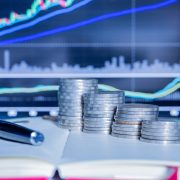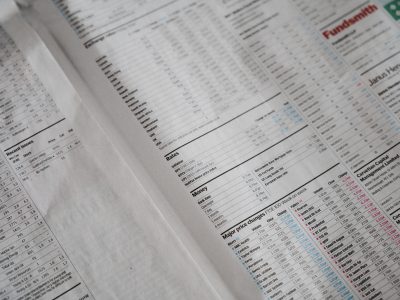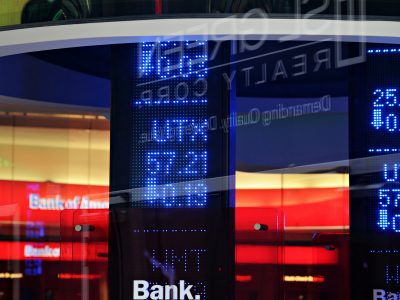What is Drawdown in Trading?
In the dynamic world of trading, which spans stocks, forex, and cryptocurrencies, grasping the concept of drawdown is crucial. A drawdown marks the reduction from a peak to a trough in your trading account or portfolio before a new peak forms. This measure is vital as it reflects the potential losses you could encounter while trading.
For traders of all experience levels, understanding drawdown is essential. It helps evaluate the effectiveness of trading strategies and adherence to sound risk management practices. By mastering drawdown, traders can bolster their defenses against market volatility and enhance their overall trading performance.
Explaining Drawdown: Definition and Examples
Drawdown in trading measures the decline in your investment or trading account balance from its peak to its lowest point before it reaches a new high. This metric is crucial for assessing the risks inherent in your trading strategy, as it shows your potential exposure during losing streaks.
There are two types of drawdowns: absolute and relative. Absolute drawdown tracks the drop from the initial account balance to the lowest point, while relative drawdown calculates the percentage decrease from the highest account balance to the subsequent lowest balance.
Illustrative Example
Imagine your trading account hits a high of $10,000 and then dips to $7,000 before rising above $10,000 again. Here, the drawdown would be $3,000 or 30%. This simple calculation aids traders in understanding the extent of potential losses they might face under adverse market conditions.
Exploring Types of Drawdown
Drawdowns in trading can arise from various sources, each affecting your trading strategy and decision-making differently.
Strategy Drawdown
This type occurs when a series of losses results from trading decisions. It’s closely tied to the effectiveness of the strategies used and their performance under specific market conditions.
Technical Drawdown
Technical drawdown happens due to errors or misjudgments in the trading setup, such as poor stop-loss settings or incorrect timing when entering trades. It often reflects the mechanical risks associated with the trading system.
Psychological Drawdown
Psychological drawdown is complex, arising from emotional reactions to market movements. Traders in a significant drawdown might become overly cautious or too aggressive, potentially worsening their losses instead of managing them.
Recognizing the source of a drawdown is crucial as it can lead to more effective adjustments in your trading plans and risk management tactics.
Drawdown in Forex Trading
Forex trading, known for its high liquidity and round-the-clock operation, frequently experiences rapid price shifts that can lead to significant drawdowns. It’s important to understand drawdown in this context because the leverage used in forex trading can magnify both gains and losses.
Causes of Drawdown in Forex
Forex drawdowns often occur due to abrupt economic announcements, geopolitical events, or sudden changes in market sentiment. These factors can cause quick shifts in currency values, impacting traders who find themselves on the wrong side of the move.
Managing Forex Drawdown
To effectively manage drawdown in forex, traders should:
Use tight stop-loss orders to cap potential losses.Employ lower leverage to reduce the risk of significant drawdowns.Stay informed about economic calendars and news events to anticipate market movements that could impact their positions.
Calculating Drawdown: A Practical Guide
To calculate drawdown, you need to identify the highest value of the account before the decline and the lowest point during the subsequent drop. The formula is:
Drawdown = Peak value − Trough value / Peak value × 100
Example Calculation
Consider a forex trader whose account balance peaks at $15,000 but then falls to $12,000 before climbing again. The drawdown calculation would be:
Drawdown = 15,000 − 12,000 / 15,000 × 100 = 20%
This 20% drawdown shows how much the account balance dipped from its peak during that period.
Understanding how to calculate drawdown is a fundamental skill for traders. It helps manage risk per trade and grasp the historical risk tied to their trading activities. By routinely measuring drawdown, traders get a realistic sense of their risk tolerance and can fine-tune their strategies accordingly.
The Critical Role of Maximum Drawdown
Maximum drawdown (MDD) is a key metric for traders and investors, indicating the deepest percentage drop in an account or portfolio from peak to trough before a new peak is achieved. Understanding MDD is crucial for evaluating the risk associated with a particular trading strategy.
Significance in Risk Assessment
Maximum drawdown helps traders understand the worst-case scenario they might face, indicating whether it’s within their risk tolerance limits. For instance, a strategy with a maximum drawdown of 50% suggests that at some point, the trader might have lost half of their peak account balance, which could be too risky for those with low risk tolerance.
Application in Backtesting and Risk Management
In backtesting, maximum drawdown is used to simulate potential losses during historical downturns. This aids in refining trading strategies to minimize future drawdowns and implement proper risk management techniques. It also helps determine the appropriate size and timing of stop loss orders to protect capital.
Drawdown in Action: Real-world Scenarios
Analyzing real-world examples of significant drawdowns provides valuable insights into how they occur and how they can be managed.
Case Study: Forex Trading Account
Consider a forex trader whose account experienced a large drawdown due to unexpected market news causing significant volatility. The account dropped from a peak of $20,000 to a trough of $10,000 over several days, marking a 50% drawdown.
By analyzing this scenario, we learn the importance of protective measures such as stop-loss orders and the necessity of staying informed about market events that could impact trading positions.
Impact and Decision-making
In this case, the drawdown not only affected the trader’s capital but also their ability to make rational decisions. The psychological impact of seeing half of the account’s value disappear could lead traders to make hasty decisions—either to recoup losses quickly or to stop trading out of fear.
Understanding drawdown helps in preparing mentally for such downturns and developing strategies to recover sustainably without taking excessive risks.
Tactical Approaches to Manage Drawdown
Effective management of drawdown is fundamental in maintaining a healthy trading account and ensuring long-term profitability.
Diversification
One of the most effective strategies to manage drawdown is diversification. By spreading investments across different asset classes, sectors, or geographical regions, traders can reduce the risk of a large drawdown affecting their entire portfolio. This helps smooth out returns, as not all assets will experience low points simultaneously.
Implementing Stop-Loss Orders
Using stop-loss orders is a critical risk management tool. It allows traders to set a specific price at which their position will automatically close to prevent further losses. This is particularly useful in limiting drawdown during volatile market conditions.
Psychological Readiness
Managing the psychological aspect of trading during drawdown periods involves maintaining discipline, sticking to a trading plan, and avoiding emotional trading. Traders should also continuously educate themselves about market conditions and trading strategies to adapt their approaches according to market behavior.
Leveraging Technology to Monitor Drawdown
Advancements in trading technology have made it easier for traders to monitor and navigate drawdowns effectively.
Tools for Monitoring Drawdown
Various software and trading platforms provide real-time analytics and metrics on drawdown. These tools help traders track their peak-to-trough performance and make informed decisions to adjust their strategies or exit positions. Check out TradingView.
Role of Technology in Informed Trading Decisions
Technology also aids in conducting thorough market analysis and backtesting strategies against historical data to foresee how they might perform in future scenarios. This predictive capability is invaluable in minimizing potential drawdowns and optimizing trading outcomes. Utilize TrendSpider for automated technical analysis.
By utilizing these technological tools, traders can maintain better control over their trading accounts, manage risks more effectively, and enhance their decision-making process, thus potentially reducing the impact and frequency of drawdowns.
Final Thoughts on Drawdown in Trading
Mastering the concept of drawdown is pivotal for any trader aiming to succeed in the volatile realms of forex, crypto, or stock trading. We have explored the nuances of drawdown from basic definitions to sophisticated management techniques. We’ve examined how drawdowns are measured, the different types that traders might encounter, and how they can profoundly affect trading decisions and overall performance.
Key strategies such as diversification, the use of stop-loss orders, and psychological resilience have been highlighted as essential for effectively monitoring and managing drawdown. Additionally, the role of technology in monitoring and mitigating drawdown has been emphasized to ensure traders can make informed decisions and maintain robust risk management practices.
Frequently Asked Questions
You should calculate drawdown regularly, typically after closing each trade or at the end of a trading period (e.g., daily, weekly, or monthly). Regular monitoring helps you understand the volatility and risk of your trading strategies in real time.
It is nearly impossible to reduce drawdown to zero in trading due to the inherent risks and uncertainties in the markets. However, effective risk management strategies can help minimize drawdowns to maintain them within acceptable limits.
A “good” maximum drawdown percentage varies depending on individual risk tolerance and trading objectives. Generally, a lower maximum drawdown (e.g., less than 20%) is considered manageable for most traders, especially if it aligns with their risk management plans.
While both drawdown and volatility measure risk, they do so differently. Volatility refers to the degree of variation in trading prices over time, represented typically by standard deviation. Drawdown, on the other hand, measures the decline from a peak to a trough over a specific period, highlighting the potential loss from top to bottom.
A high maximum drawdown typically indicates a higher-risk strategy, as it reflects a significant loss from peak to trough. However, it should be analyzed in conjunction with other factors like overall returns and volatility to determine the strategy’s risk-adjusted performance.
Yes, absolute drawdown measures the loss from the initial account balance to its lowest point, which can be crucial for understanding how long it might take to recover the initial balance. Maximum drawdown measures the largest single drop, which is critical for evaluating the worst-case scenario but may not provide direct insights into recovery time.
Yes, significant drawdowns can affect the compounding of interest in trading accounts because they reduce the capital base on which returns could be generated. Minimizing drawdown is essential to maintaining a steady growth curve and benefiting from the compounding of profits over time.









Comments